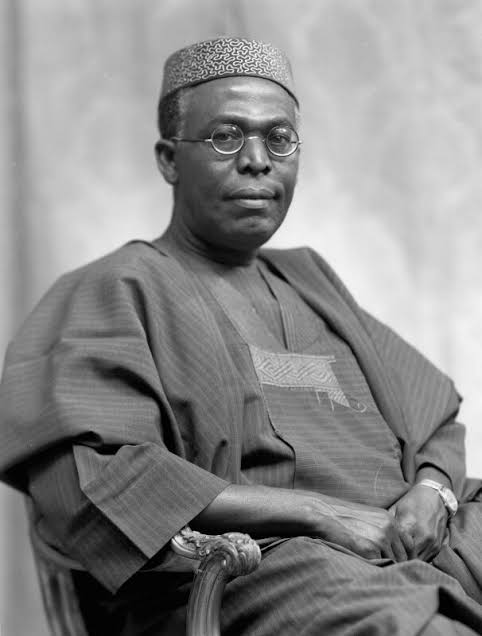A world renown economist Prof Jeffrey Sachs has said Africa should aim for and achieve economic growth on the order of 8 to 10% per year for the upcoming four decades, up to 2063, the 100th anniversary of African unity.
Prof Sachs gave this advice in his keynote address at the Ọbafẹmi Awolọwọ Memorial Webinar, tagged :‘Our 21st Century World: Reflections and Projections’ on March 6, 2025.
Using various case studies across the globe, Sachs said Africa is seriously lagging behind in the world order and must urgently do something within the next 40years or remain behind.
Hear him;
“China, during the period from 1980 to 2020, achieved roughly 10% per year economic growth, amounting to more than a 30X increase of the size of the Chinese economy.
“India today is growing at around 6% per year and I think it will increase to around 7% per year. That too is a very rapid rate that is transforming India’s economy, ending its extreme poverty and putting India also into the front ranks of advanced technologies.
“As for Africa, I believe that Africa should aim for and achieve economic growth on the order of 8 to 10% per year for the upcoming four decades, up to let me say 2063, the 100th anniversary of African unity.
“So, I would like Africa both to design and implement a high growth strategy in the coming 40 years. I think that the historic success that China achieved and that India is achieving helps to chart the path for Africa as well.
Africa currently is growing at 3 or 4% per year aggregate.
” Because of rapid population growth of around 2.3%, that means just 1-2% per annum in per capita terms, which is woefully insufficient. So, Africa’s growth rate needs to be increased rapidly and the key question is how to achieve that.
Sachs explained: “Now, the key point is that high growth results from a high investment rate, and the crucial investments are of five kinds: human capital, infrastructure, intellectual capital (R&D), business capital, and natural capital.
“The most important investment is in human capital, especially the health, nutrition, education and skills of Africa’s young people. In this regard, Africa is the youngest continent in the world.
“If we define “school age” to be ages 3 – 21 (spanning from early childhood development through some form of tertiary education), a remarkable 45% of Africa’s population is of school age.
“Think of it, roughly half of Africa’s population is of school age! (In the high-income countries, the share is around 21%).
“Africa’s young people need a quality education, and there’s no time to lose! If a child is forced to drop out of school in lower secondary, or before finishing upper secondary, that boy or girl is likely to suffer a massive loss of income and wellbeing for their whole lifetime, and a massive loss for society.
“So, the first order of business in achieving next 40 years of rapid growth is achieving a very high level of educational attainment.
“That is expensive and it takes a long time to realise the returns — twenty years to educate a child – yet the returns are the highest that a society can achieve.
” I estimate that the returns to educating a child through upper-secondary are around 20% internal rate of return (IRR).
“The second kind of investment is investment in infrastructure, including transport, the power grid, the digital networks, water and sanitation, and climate resilience.
“The third kind of investment is in technology and innovation. Innovation is not just a by-product of the market forces. Governments need to invest in research and development (R&D) for their societies to reap the benefits of technological advance. Yes, many technologies come from abroad, but even these technologies need to be adapted locally and reconfigured locally.
“The localization requires domestic R&D. Africa spends a small fraction of one per cent of GDP on research and development, whereas China and the US now spend around 3% of GDP, while Korea currently spends around 5% of GDP. Africa’s innovation economy needs investment by governments across Africa.
“The fourth area of investment, of course, is business investment. Business investment is boosted especially when there are skilled workers and high-quality infrastructure and the ability to adopt or adapt advanced technologies.
“Then, the businesses will come to Africa far beyond the traditional investments in mining and agriculture. They will come in on a large scale, including in the manufacturing and service sectors of the economy.
“Beyond China, many other parts of the world are experiencing a massive advance in technology and in their geopolitical weight. India is another crucial case. Russia obviously is yet another great power in the world today.
” I count on Africa becoming one of the world’s great poles of growth and geopolitics in the coming decades.
“Of course, the technological revolution is also changing our economies dramatically, faster than we can keep up.
“The advances in artificial intelligence are very real. The advances in robotics are astounding. The advances in space-based technologies surveillance and the ability for satellite imagery and other geospatial data to change how governments functions are dramatic.
“Militaries are obviously changing rapidly in the face of this technological revolution. These technological advances are deep and even accelerating.
“At the same time, we have the global environmental crisis that has also accelerated dramatically in recent years. In just the past four years, Earth has warmed by astounding 0.3 degrees Celsius.
“This is absolutely remarkable. We have actually exceeded the 1.5 degrees centigrade limit that was agreed in the Paris Climate Agreement of 2015.
“And we also have a massive demographic change underway as well. In some parts of the world, populations have peaked and are beginning to decline.
“China is a case in point. China’s population has peaked at 1.4 billion, and if current assessments of future fertility are borne out, China’s population will be under 1 billion by the end of this century, even around 700 million, according to the United Nations forecast.
“At the same time, Africa’s population continues to soar. It’s at about 1.5 billion today and by mid-century, perhaps, about 2.4 billion. And according to the UN, estimates could be as much as 3.8 billion by the end of the century, roughly 37% of the projected world population.
“China, during the period from 1980 to 2020, achieved roughly 10% per year economic growth, amounting to more than a 30X increase of the size of the Chinese economy.
“India today is growing at around 6% per year and I think it will increase to around 7% per year. That too is a very rapid rate that is transforming India’s economy, ending its extreme poverty and putting India also into the front ranks of advanced technologies.

